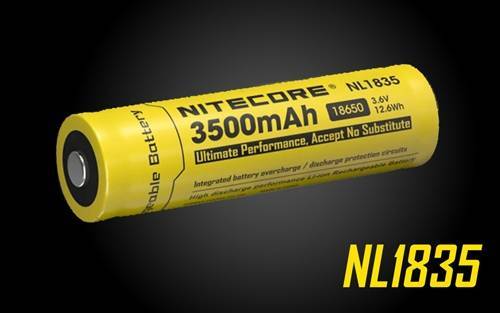I'm looking into the new E21A LEDs. I haven't tested them yet, but they should work just fine within a reasonable Vf
What is a reasonable Vf range to consider?
We've used mainly unprotected cells because they are shorter and the batteries typically perform better in this design (especially with the safer chemistries we have available now). I'll post a pic of the batteries we use shortly.
As for the batteries, there are resistances built into the design that keeps the amperage well below nuclear levels on high discharge batteries. I like them because of the shorter stature, good bang they provide, and safe-at-low-discharge chemistry available in some of the newer cells. Also the electronics in protected cells I'm afraid would become the fail-point in some of the high-impact tests we do (although I definitely need to try that out). That being said, I will start buying some protected cells and see how well I can overlap the battery tube offerings. Or possibly make them adjustable. I'm working to acquire a bulk load of QTC now so hopefully I will be able to start selling those pills as well.
Yes, any of the batteries in the 3.7 (4.2) volt range will run the light. And a primary 3v cr123 will run it as well but a bit dimmer. A single 1.5v cell doesn't have the umph, but 2 or (max) 3 1.5v primaries will run it. I hope to have more battery tube/spacer options as we scale our manufacturing better.
I'm tinkering with some designs that have an adjustment mechanism for the longer batteries but they are still being prototyped. For now generally the unprotected, safe-chemistry, high-discharge battery varieties are what I use.
What would be the safest chemistries listed in order of safest to least safe?
What specifications do we look for?
Batteries with higher discharge generally have lower capacities. Looking to be able to determine the lowest discharge battery for a given emitter at direct drive. What emitter specification do we look for here? If a battery has a lower discharge rate than the emitter, would it equate to having a less bright output at direct drive or will it mean a runaway?
Have found 16650 batteries with same rated discharge rate and capacity to 21700 batteries. Why are 16650 batteries preferred in some cases? What are the advantages?
In the case of fully degraded QTC (which my current EDC is fully degraded QTC that has turned to powder basically), the light will continue to function by simply having to tinker to get levels or a full twist for direct-drive.
If you ever want to test the full capability of whichever battery you are using, you can take the QTC out of the piston and then turn the light on with no QTC in the system. That will make the light go into full direct-drive.
Even at .06A the QTC still puts through the full voltage of the cells. QTC is strange stuff. At max brightness or at the lowest moonlight levels, the voltage going through the system is the same (only the amperage changes).
Correct, it is regulated by the QTC until full-compression where it goes into direct drive. There, it can pull anywhere between 2-4A depending on the emitter and battery (mostly the battery), but intentionally stops at around 4A to avoid a runaway. We're tinkering now with some hotter models that can really let some stuff like the SST40 eat.
EDC is correct, mechanical resistance is built into the system to avoid overrunning. With the extra emphasis on heatsinking and the resistance springs, we haven't had one overrun yet.
What are the specifications on both the emitter and battery that one needs to ensure to avoid runaways?
Does the newer model flashlights all intentionally stop at 4A to prevent runaways? Can the 4A value be measured by ie., a DMM? How?
With different LED and Battery specifications, what values to we need to know and how do we determine the maximum pull?
With 4A max pull of the emitter / battery combination at direct drive, would a 4A rated continuous discharge battery be optimal? What advantages would a 15A rated continuous discharge battery have?
Any of the modern LEDs will work with the forward voltage and built-in resistance of the system. I try to get as low forward voltage as possible generally.
How can we determine the range of the forward voltage and resistance of the system? What are the specifications for these in the latest QT-SS drop?
Currently the Tiny Nugget runs 18350, 18500, 18650, and soon 21700....all different battery tube options that interchange with the engine.
The Tiny Nugget 18650, 18350, 18500, and now 21700 all are interchangeable with the Tiny Nugget Engine now.
Would the latest QT-SS have a battery tube option for 21700?
In my opinion it also looks cool - and now only has 2 possible points of water incursion....at the optic, and at the battery tube. Which are both water-sealed tight. Getting rid of the battery tube tail cap and bezel on the front feels real good. Machining them however was a nightmare at first.
Is getting rid of the battery tube tail cap a feature for the smaller 18350 cells only or also feasible for the 18650 while still accommodating both protected and unprotected cells?
Yep, Geisto is correct - just need an LED on a 16mm MCPCB!
The best thing about our flashlights is that any emitter will work in the thing, as long as it's on a 16mm MCPCB.
Do we assume MCPCB thickness are equal or is there a range for that?
Going through the threads and trying to compile specifications and information for a rough guide on how to best enjoy the full range of options for a Fraz - for the layman.



